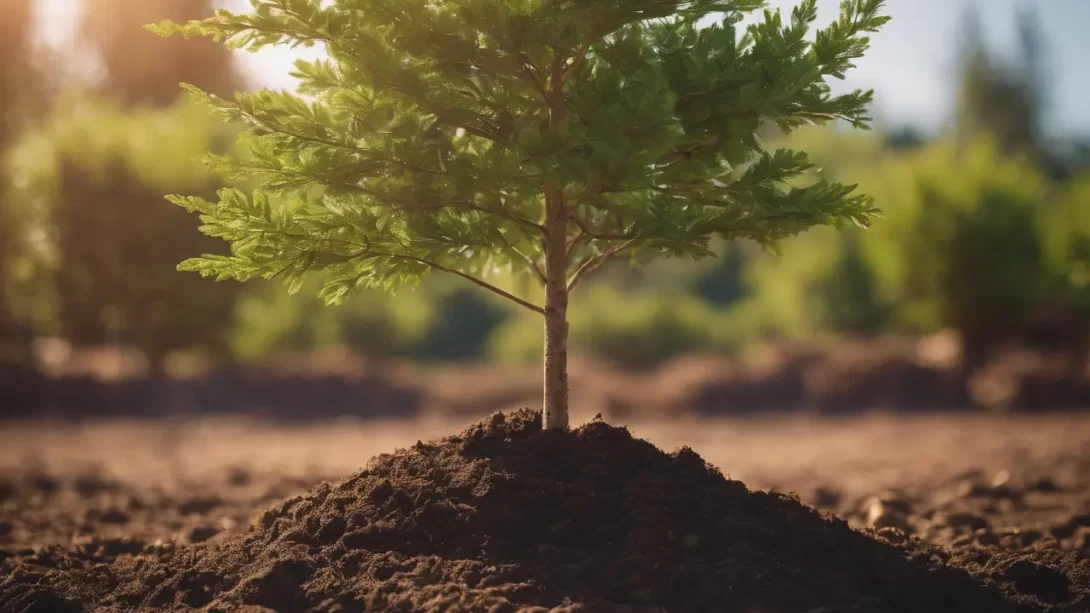Establishing a newly planted tree in your landscape is a rewarding endeavor, but it comes with critical responsibilities, chief among them being proper watering. Newly planted trees have different watering needs compared to their established counterparts due to their developing root systems. Understanding these needs is crucial to ensure the tree’s survival and healthy growth.
Watering Needs of New Trees
Newly planted trees are particularly vulnerable as they adapt to a new environment and work to establish their root systems. Adequate water is essential during this period as it encourages root growth, which is critical for the tree’s overall health and stability. Unlike established trees with extensive root systems that can access water from deeper soil layers, new trees rely heavily on surface moisture, making regular watering vital.
General Watering Guidelines for New Trees
As a general rule, newly planted trees require watering every day for the first couple of weeks following planting. After this initial period, watering can be reduced to once a week for the first year, depending on the tree’s specific needs and environmental conditions. This schedule helps ensure that the soil remains consistently moist but not waterlogged, providing an ideal environment for root establishment.
Factors Influencing Watering Frequency
Several key factors dictate how often you should water a newly planted tree:
- Tree Species and Size: Different species have varying water requirements, and larger trees typically need more water due to their larger root balls.
- Soil Type and Drainage: Soils that drain quickly, like sandy soils, require more frequent watering than those that retain water longer, like clay soils.
- Climate and Seasonal Variations: Hotter, drier climates and seasons necessitate more frequent watering compared to cooler, wetter conditions.
- Recent Weather Conditions: Rainfall or other weather events can supplement or reduce the need for additional watering.
Assessing Soil Moisture
Determining when to water a newly planted tree involves assessing soil moisture. One effective method is the “finger test,” where you insert a finger or a small stick into the soil near the tree’s base. If the soil at about 2 to 3 inches deep feels dry, it’s time to water. For a more precise measurement, using a soil moisture meter can provide an accurate indication of moisture levels at various depths. This method is especially helpful in avoiding both overwatering and underwatering, as it gives a clear picture of the soil’s moisture content.
Watering Techniques for New Trees
The technique used to water new trees is just as important as the frequency. Deep watering, which slowly saturates the root zone, is recommended. This method encourages deeper root growth, which is crucial for the tree’s long-term health. To achieve this, water should be applied slowly at the tree’s base, allowing it to penetrate deeply into the soil. A soaker hose or drip irrigation system is ideal for this purpose, as they deliver water directly to the soil at a controlled rate. It’s important to distribute water evenly around the root zone and not just at the trunk base.
Common Mistakes to Avoid
When watering newly planted trees, there are several common mistakes that should be avoided:
- Overwatering: While it’s crucial to keep the soil moist, too much water can lead to root rot and other diseases. The soil should be moist, not soggy.
- Relying on Sprinklers: Sprinkler systems often provide shallow watering that doesn’t reach deeper roots. They can also distribute water unevenly, leading to dry spots.
- Watering Too Infrequently: Infrequent watering can hinder the establishment of the root system, making the tree vulnerable to stress and disease.
Long-Term Watering Considerations
As a newly planted tree matures, its watering needs will evolve. Typically, after the first year, the tree’s root system will have established itself sufficiently to allow for a reduction in watering frequency. Gradually transitioning to a less intensive watering schedule helps the tree adapt to drawing moisture from deeper soil layers, promoting its resilience and health. This transition should be gradual and based on careful observation of the tree’s health and growth patterns.
Tips for Adjusting Watering Practices Over Time
- Monitor Tree Health: Look for signs such as leaf color, leaf drop, and new growth to gauge the tree’s health and adjust watering accordingly.
- Seasonal Adjustments: Increase watering during dry seasons or heat waves and reduce it during rainy periods or cooler months.
- Mulching: Applying a layer of mulch around the base of the tree can help retain soil moisture and reduce the need for frequent watering. Ensure the mulch is not piled against the trunk to avoid moisture-related diseases.
- Soil Amendments: Improving soil quality through organic amendments can enhance its water-holding capacity, benefiting the tree in the long run.
Conclusion
Establishing a newly planted tree requires careful attention to watering, as it is crucial for the development of a strong and healthy root system. Starting with more frequent watering and gradually reducing the frequency as the tree establishes allows for the development of deep and robust roots. By understanding the factors that influence a tree’s water needs and adjusting practices over time, gardeners can ensure their trees thrive for years to come. Remember, the goal is to create a balance where the tree receives enough moisture to grow while encouraging it to become self-sufficient and resilient.




